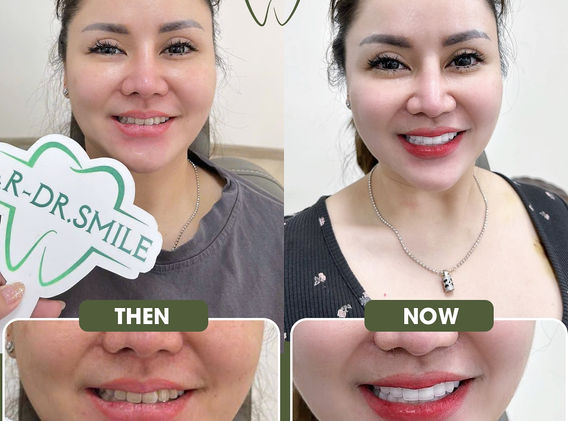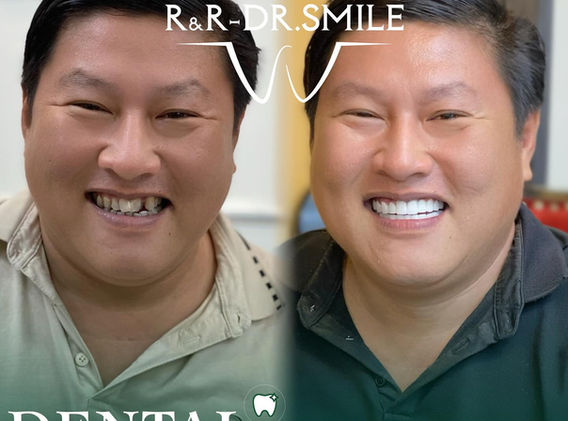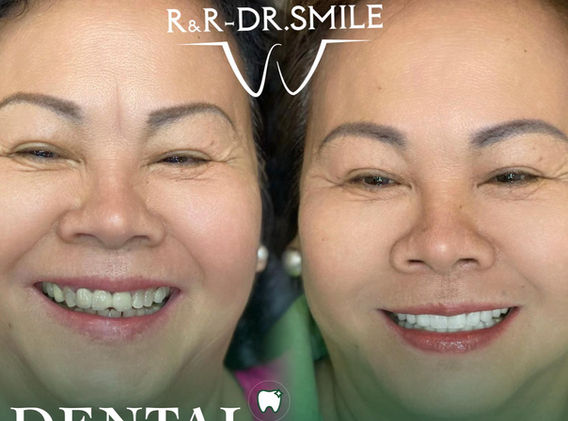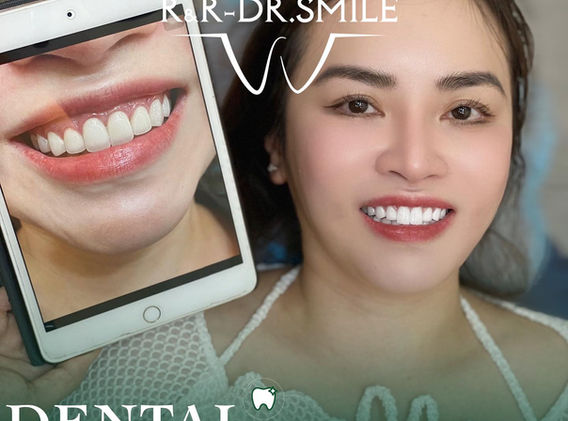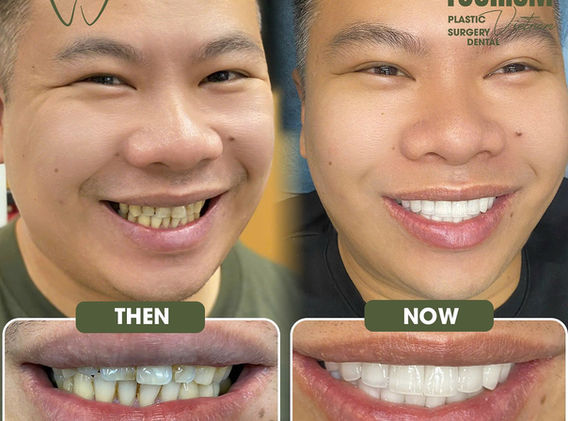

Transform Your Smile With R&R Dr. Smile - Quality & Affordable Cosmetic Dentistry In Vietnam
Cosmetic dentistry has become increasingly popular in recent years as people seek to enhance their smiles and improve their overall appearance. Among the various procedures available, dental crowns and veneers are effective and popular solutions for addressing a range of dental imperfections. In this post, let's delve into the reasons why someone might opt for dental crowns or veneers, and which material is more suitable for each option. We understand that cosmetic dentistry can be confusing and expensive, and that is why we are here to help!
Why Choose Cosmetic Dentistry?
-
Enhanced Aesthetics: One of the primary reasons individuals pursue cosmetic dentistry is to improve the appearance of their smiles. Dental crowns and veneers can effectively address issues such as chipped, cracked, stained, or misshapen teeth, resulting in a more aesthetically pleasing smile.
-
Boost Confidence: A smile that looks healthy and attractive can significantly boost self-confidence and self-esteem. Cosmetic dentistry enables individuals to feel more comfortable and confident in social and professional settings by providing them with a smile they can be proud of.
-
Improved Oral Health: In many cases, cosmetic dental procedures not only enhance aesthetics but also contribute to better oral health. Dental crowns can protect weakened or damaged teeth from further decay or breakage and protect the underlying tooth structure, while veneers can cover minor dental imperfections.
-
Long-Term Results: With proper care and maintenance, dental crowns and veneers can provide long-lasting results, allowing individuals to enjoy the benefits of their enhanced smiles for years to come.
Veneers vs Crowns: Which Are The Differences?
Veneers:
Veneers are thin shells typically made of composite (plastic), porcelain, or ceramic materials that are custom-made to cover the front surface of teeth only. They are primarily used to improve the appearance of teeth by correcting issues such as discoloration, chips, cracks, gaps, or slight misalignment.
Pros:
-
Cosmetic Enhancement: Veneers can dramatically improve the appearance of teeth by enhancing their color, shape, size, and alignment, resulting in a more attractive smile.
-
Less Invasive: Compared to crowns, veneers require minimal tooth grinding, preserving more of the natural tooth structure.
Cons:
-
Fragility: While veneers are durable, they are more susceptible to chipping or fracturing compared to crowns, particularly if subjected to excessive force or trauma.
-
Irreversible: The process of preparing teeth for veneers involves removing a small amount of enamel, which is irreversible.
Crowns:
Dental crowns, also known as caps, are tooth-shaped restorations that encase the entire visible portion of a tooth above the gum line. They can be made from various materials including ceramic-based materials like Zirconia and Lithium Disilicate, porcelain, porcelain fused-to-metal (PFM) or even gold.
Pros:
-
Superior Restorative Function: Crowns provide structural support and protection to damaged, weakened, or decayed teeth, restoring their strength, functionality, and appearance.
-
Versatility: Crowns can address a wide range of dental issues, including extensive decay, fractures, large fillings, root canal-treated teeth, and severely discolored or misshapen teeth.
-
Longevity: With proper care and maintenance, dental crowns can last for many years, offering durable and reliable restoration of teeth.
Cons:
-
Tooth Reduction: The process of preparing a tooth for a crown involves significant removal of enamel, which may compromise the tooth's structure and increase the risk of sensitivity or nerve damage.
-
Similar to dental veneers, the process is irreversible.
Dental Crown and Veneer Materials: Zirconia & Lithium Disilicate Are The Clear Winners
At R&R Beauty Aesthetic (Dr. Smile), we specialize in ceramic crowns and veneers made of Zirconia or Lithium Disilicate because they combine the strength of metal with the aesthetics of porcelain crowns, making them the most ideal, durable, and popular choice in cosmetic dentistry. In terms of price, composite crowns and veneers are much cheaper but they only have a lifespan of two to five years. In terms of durability, porcelain fused to metal crowns may be generally stronger, but they may not be as aesthetically pleasing.
Both Zirconia and Lithium Disilicate are ceramic materials known for their strength and durability making them resistant to chipping, cracking, and wear. This makes them an ideal choice for restoring teeth that undergo significant biting forces.
However, even between the two materials, each has its own advantages and suggested uses. We typically recommend that our clients use Zirconia for crowns and Lithium Disilicate for veneers, although they may be used interchangeably at times.
One advantage of Zirconia is that it has higher flexural strength at approximately 1000MPa, while Lithium Disilicate has lower flexural strength at approximately 400MPa. In dental materials, such as those used for crowns and veneers, flexural strength is an important factor in determining the durability and longevity of the restoration, as it indicates how well the material can withstand the forces exerted during chewing and biting.
However, Zirconia crowns may not actually last longer than Lithium Disilicate ones, despite a higher flexural strength, due to the cementing or bonding process. Zirconia crowns are cemented conventionally and the veneering cement has a flexural strength of only around 100 MPa. On the other hand, bonding Lithium Disilicate materials to the teeth involves etching, a process to roughen the enamel. The etching process process allows for better bonding and is therefore more suitable for veneers, which are just thin shells bonded to the teeth's front surface. When used for Crowns, some studies suggest that Lithium Disilicate crowns perform better in fatigue testing when compared to Zirconia. Because of the more complicated installation process, Lithium Disilicate crowns and veneers end up costing more than Zirconia crowns.
What Is The Cost Of Dental Crowns And Veneers?
Cosmetic dentistry is expensive and the cost of Ceramic or Porcelain veneer or crown can range anywhere from USD500 to USD2500 or more per tooth, depending on the material and the preparation required. These are the prices commonly quoted by dentists across Australia, Singapore, and the US.
Before you dismiss the idea of cosmetic dentistry entirely due to the hefty cost, we have good news for you. At R&R Beauty Aesthetic (Dr. Smile), we aim to bring affordable cosmetic surgery & dentistry in Vietnam to our customers in the region. For that, our price for Zirconia Crown starts from just USD130 per tooth, while Lithium Disilicate Veneer starts from USD300 per tooth. That is savings of at least 70%!
So if you would like to learn more, contact us today to schedule a consultation.







